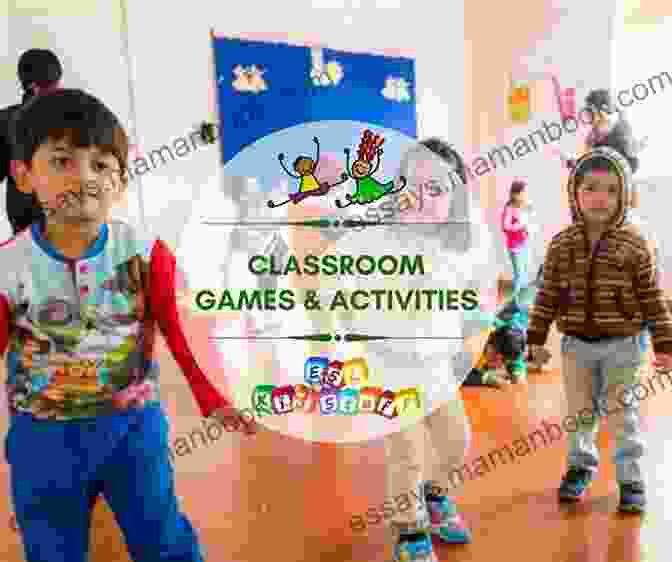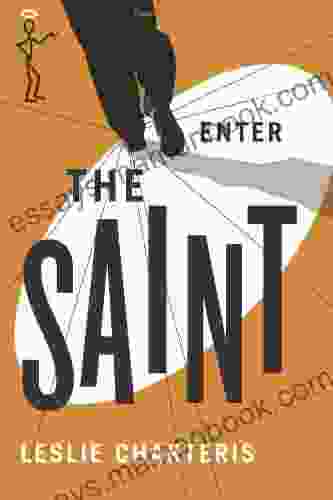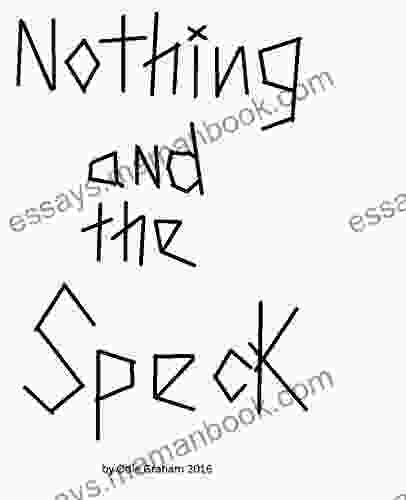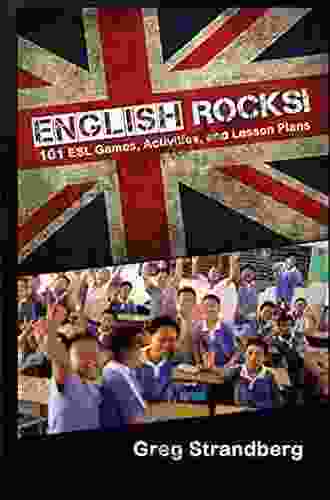English Rocks 101: ESL Games, Activities, and Lesson Plans for Teaching English Abroad


Teaching English abroad can be a rewarding experience, but it can also be challenging. One of the biggest challenges is keeping your students engaged and motivated. This is where ESL games, activities, and lesson plans come in.
4.2 out of 5
| Language | : | English |
| File size | : | 8504 KB |
| Text-to-Speech | : | Enabled |
| Screen Reader | : | Supported |
| Enhanced typesetting | : | Enabled |
| Word Wise | : | Enabled |
| Print length | : | 281 pages |
| Lending | : | Enabled |
ESL games and activities are a great way to make learning English fun and interactive. They can be used to teach a variety of skills, from grammar and vocabulary to pronunciation and fluency. Lesson plans can help you to organize your teaching and ensure that you are covering all of the necessary material.
In this article, we will provide you with a comprehensive guide to ESL games, activities, and lesson plans. We will cover a wide range of topics, from icebreakers and warm-ups to grammar exercises and vocabulary games. We will also include tips for adapting these activities to different levels and learning styles.
Icebreakers and Warm-ups
Icebreakers and warm-ups are a great way to get your students talking and interacting with each other. They can also help to create a positive and relaxed learning environment.
Here are a few ideas for icebreakers and warm-ups:
- Two Truths and a Lie: Have students write down two true statements about themselves and one lie. Then, have them share their statements with the class and guess which one is the lie.
- Would You Rather: Ask students a series of "Would you rather?" questions. For example, "Would you rather live in a big city or a small town?" or "Would you rather have a million dollars or be able to speak every language in the world?"
- Pictionary: Write a list of words or phrases on the board. Then, divide students into teams and have them take turns drawing the words or phrases while their teammates guess.
- Charades: Write a list of words or phrases on slips of paper. Then, have students take turns acting out the words or phrases while their teammates guess.
- Simon Says: Give students a series of commands, such as "Simon says touch your nose" or "Simon says jump up and down." Students must only follow the commands that start with "Simon says."
Grammar Exercises
Grammar exercises are a great way to help students learn and practice the rules of English grammar. There are a variety of different grammar exercises that you can use, depending on the level of your students.
Here are a few ideas for grammar exercises:
- Fill in the blanks: Give students a sentence with several blanks. Then, have them fill in the blanks with the correct words.
- Multiple choice: Give students a question with several multiple choice answers. Then, have them choose the correct answer.
- True or false: Give students a statement. Then, have them decide if the statement is true or false.
- Sentence transformation: Give students a sentence. Then, have them transform the sentence into a different tense, mood, or voice.
- Error correction: Give students a sentence with several errors. Then, have them correct the errors.
Vocabulary Games
Vocabulary games are a great way to help students learn and practice new vocabulary words. There are a variety of different vocabulary games that you can use, depending on the level of your students.
Here are a few ideas for vocabulary games:
- Word puzzles: Give students a word puzzle, such as a crossword puzzle or a word search. Then, have them solve the puzzle to find the vocabulary words.
- Matching games: Give students a list of vocabulary words and a list of definitions. Then, have them match the words to the correct definitions.
- Bingo: Give students a bingo card with a list of vocabulary words. Then, read out the definitions of the words. Students must listen to the definitions and mark off the words on their bingo cards.
- Charades: Write a list of vocabulary words on slips of paper. Then, have students take turns acting out the words while their teammates guess.
- Pictionary: Write a list of vocabulary words on the board. Then, divide students into teams and have them take turns drawing the words while their teammates guess.
Lesson Plans
Lesson plans are a great way to organize your teaching and ensure that you are covering all of the necessary material. Lesson plans can also help you to track your students' progress and make adjustments as needed.
When creating a lesson plan, be sure to include the following information:
- Objectives: What do you want your students to learn by the end of the lesson?
- Materials: What materials will you need for the lesson?
- Procedure: How will you conduct the lesson?
- Assessment: How will you assess your students' learning?
Here is an example of a lesson plan for an ESL class:
Objectives:
- Students will be able to identify the different parts of speech.
- Students will be able to use the different parts of speech to create sentences.
Materials:
- Whiteboard or chart paper
- Markers
- Handouts with examples of sentences
Procedure:
- Begin by reviewing the different parts of speech with your students. You can use a whiteboard or chart paper to write down the different parts of speech and their definitions.
- Once your students have reviewed the different parts of speech, have them work in pairs or small groups to create sentences using the different parts of speech.
- When students have finished creating sentences, have them share their sentences with the class.
- As students share their sentences, be sure to point out any errors in grammar or usage.
- To conclude the lesson, have students complete a handout with examples of sentences. Students should identify the different parts of speech in each sentence.
Assessment:
- Students' participation in class discussions
- Students' ability to create sentences using the different parts of speech
- Students' completion of the handout
Tips for Adapting Activities to Different Levels and Learning Styles
When adapting ESL games, activities, and lesson plans to different levels and learning styles, it is important to consider the following factors:
- Level: The level of your students will determine the difficulty of the activities you choose. For example, beginner students will need activities that are simple and easy to understand, while advanced students will be able to handle more challenging activities.
- Learning style: Some students learn best by listening, while others learn best by reading, writing, or ng. Be sure to choose activities that cater to the different learning styles of your students.
- Group size: The size of your group will also affect the activities you choose. Some activities are better suited for small groups, while others are better suited for large groups.
- Available resources: The resources you have available will also affect the activities you choose. For example, if you do not have a lot of time, you may want to choose activities that can be done quickly and easily.
By considering these factors, you can adapt ESL games, activities, and lesson plans to meet the needs of your students.
ESL games, activities, and lesson plans are an essential part of teaching English
4.2 out of 5
| Language | : | English |
| File size | : | 8504 KB |
| Text-to-Speech | : | Enabled |
| Screen Reader | : | Supported |
| Enhanced typesetting | : | Enabled |
| Word Wise | : | Enabled |
| Print length | : | 281 pages |
| Lending | : | Enabled |
Do you want to contribute by writing guest posts on this blog?
Please contact us and send us a resume of previous articles that you have written.
 Top Book
Top Book Novel
Novel Fiction
Fiction Nonfiction
Nonfiction Literature
Literature Paperback
Paperback Hardcover
Hardcover E-book
E-book Audiobook
Audiobook Bestseller
Bestseller Classic
Classic Mystery
Mystery Thriller
Thriller Romance
Romance Fantasy
Fantasy Science Fiction
Science Fiction Biography
Biography Memoir
Memoir Autobiography
Autobiography Poetry
Poetry Drama
Drama Historical Fiction
Historical Fiction Self-help
Self-help Young Adult
Young Adult Childrens Books
Childrens Books Graphic Novel
Graphic Novel Anthology
Anthology Series
Series Encyclopedia
Encyclopedia Reference
Reference Guidebook
Guidebook Textbook
Textbook Workbook
Workbook Journal
Journal Diary
Diary Manuscript
Manuscript Folio
Folio Pulp Fiction
Pulp Fiction Short Stories
Short Stories Fairy Tales
Fairy Tales Fables
Fables Mythology
Mythology Philosophy
Philosophy Religion
Religion Spirituality
Spirituality Essays
Essays Critique
Critique Commentary
Commentary Glossary
Glossary Bibliography
Bibliography Index
Index Table of Contents
Table of Contents Preface
Preface Introduction
Introduction Foreword
Foreword Afterword
Afterword Appendices
Appendices Annotations
Annotations Footnotes
Footnotes Epilogue
Epilogue Prologue
Prologue Denise Kiernan
Denise Kiernan Joseph Murphy
Joseph Murphy Erik Smith
Erik Smith Lawrence F Katz
Lawrence F Katz Jurgen Appelo
Jurgen Appelo Shelly Tochluk
Shelly Tochluk Louis Aragon
Louis Aragon Valarie Johnson
Valarie Johnson John Mcdonnell
John Mcdonnell Steve Healey
Steve Healey Donald S Kachur
Donald S Kachur Adrian Bethune
Adrian Bethune Paul C Middleton
Paul C Middleton Pierre Pureur
Pierre Pureur Suet Fan Regina Wong
Suet Fan Regina Wong H Rider Haggard
H Rider Haggard Alfred De Musset
Alfred De Musset Robyn Wideman
Robyn Wideman May Sage
May Sage Hillary Hawkins
Hillary Hawkins
Light bulbAdvertise smarter! Our strategic ad space ensures maximum exposure. Reserve your spot today!

 William GoldingDragons And Stuff: An Epic Fantasy Series That Will Ignite Your Imagination
William GoldingDragons And Stuff: An Epic Fantasy Series That Will Ignite Your Imagination
 Ryūnosuke AkutagawaEnter the Saint: A Comprehensive Guide to Leslie Charteris' Enduring Creation
Ryūnosuke AkutagawaEnter the Saint: A Comprehensive Guide to Leslie Charteris' Enduring Creation Dan BellFollow ·13.2k
Dan BellFollow ·13.2k Matthew WardFollow ·18.8k
Matthew WardFollow ·18.8k Albert ReedFollow ·12.2k
Albert ReedFollow ·12.2k Oliver FosterFollow ·3.4k
Oliver FosterFollow ·3.4k J.R.R. TolkienFollow ·8.9k
J.R.R. TolkienFollow ·8.9k Vernon BlairFollow ·9.1k
Vernon BlairFollow ·9.1k Hector BlairFollow ·6.8k
Hector BlairFollow ·6.8k Dallas TurnerFollow ·3.9k
Dallas TurnerFollow ·3.9k

 Dean Butler
Dean ButlerBlack Widow 2024: A Comprehensive Guide to Kelly...
In 2024, Marvel...

 Gage Hayes
Gage HayesNothing and the Speck: An In-Depth Analysis of Yana...
Yana Toboso's works, particularly the manga...

 Stan Ward
Stan WardThe Best American Poetry 1997: James Tate
The Best American Poetry...

 Corey Green
Corey GreenThe Chance of Home: Exploring the Poetic Landscape of...
Immerse yourself in the evocative world of...
4.2 out of 5
| Language | : | English |
| File size | : | 8504 KB |
| Text-to-Speech | : | Enabled |
| Screen Reader | : | Supported |
| Enhanced typesetting | : | Enabled |
| Word Wise | : | Enabled |
| Print length | : | 281 pages |
| Lending | : | Enabled |












